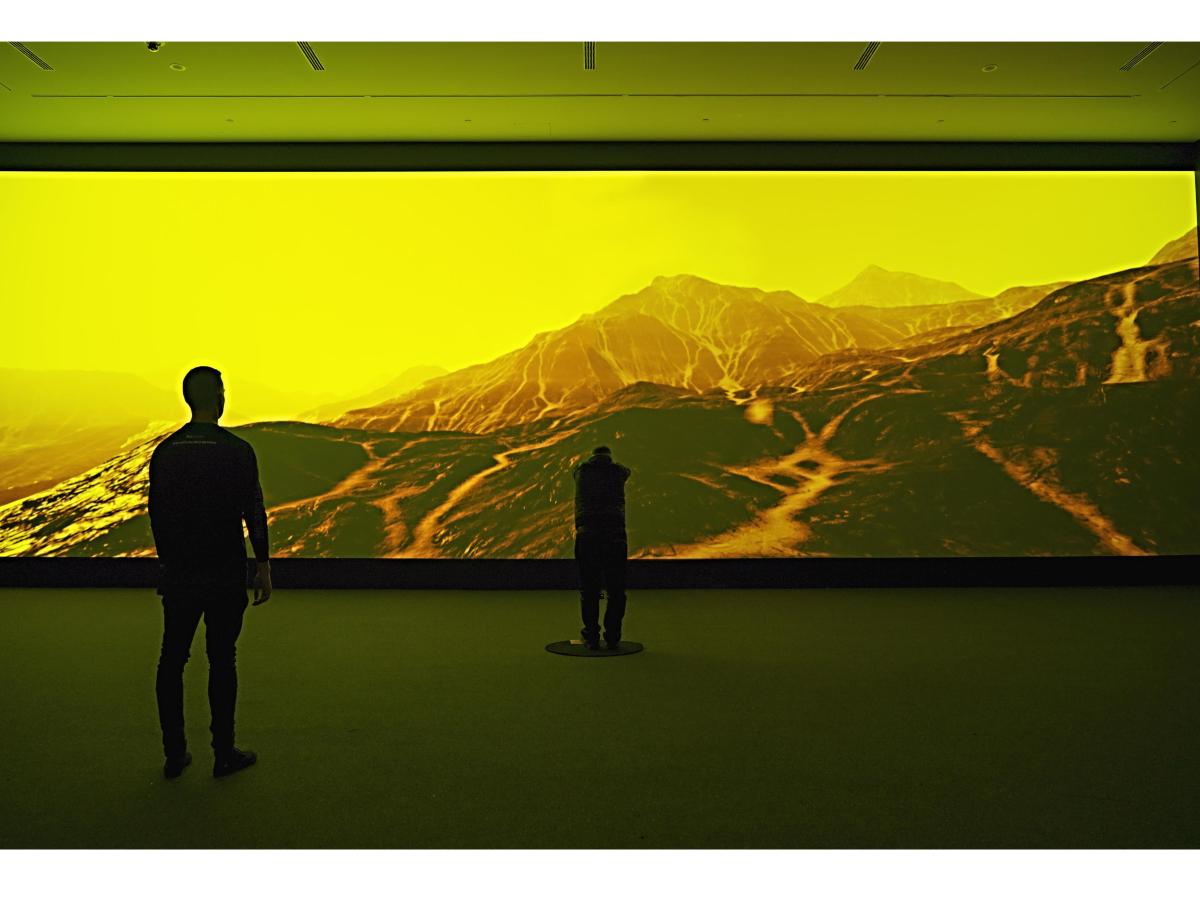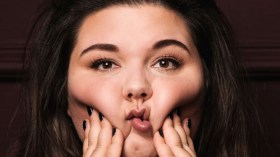Image: David Haines and Joyce Hinterding, Geology, 2015. © the artists.
The public programs of the Museum of Contemporary Art Australia engage with an incredible range of audiences, from Art Baby through to Lights on Later. ‘We try to connect with as wide an audience as possible,’ said Director of Curatorial and Digital, Blair French. A key characteristic of this audience is a background in contemporary art, and the Museum aims to present a program where artists can come together to interrogate existing practices and ideas. ‘We want to make sure we’re continuing to work with those audiences,’ said French. ‘We get a lot of feedback through our formal and informal advisory groups. The more we can do to involve artists as much as possible with idea formation in the Museum, the better.’
Artists and related professionals are propagators of ideas but also audience members and participants in these programs. Two upcoming conferences, Energies in the Arts (13–15 August) and C3West Civic Actions: Artists’ Practices Beyond the Museum (10–12 September), both take the Museum’s programming as their starting point. In this way a connection with artists is always maintained.
The wide-ranging Energies in the Arts conference coincides with the exhibition Energies: Haines & Hinterding, on show until 6 September. The conference is co-presented by the MCA and UNSW Art & Design’s National Institute for Experimental Arts (NIEA), and will examine the dynamic relationship between art and energy, ranging across issues of technology, ecology, and art history. One of the keynote lectures will be presented by Professor Linda Dalrymple Henderson of the Department of Art and Art History, The University of Texas in Austin, discussing energy and art in the 20th century, while Berlin artist Martin Howse, and David Haines and Joyce Hinterding themselves, will also give keynotes. ‘So there are elements providing an historical basis to contemporary practice, as well as forward-thinking discussions,’ explained French.
‘Some of the presentations have very strong links to the exhibition and some will be spinning off into other territories, but it’s very important to us that it’s grounded in that show. It comes from the conversations between the curator, Anna Davis, and the fields that help inform her thinking and ideas in developing the exhibition.’ Davis is convenor of the conference along with Professor Douglas Kahn and Dr. Josh Wodak of the NIEA. ‘Douglas Kahn is the crucible of that conference,’ enthused French. ‘He is one of the most exciting thinkers in the city.’
Students are also welcome at Energies in the Arts. ‘Hosting the third day of the conference on campus at UNSW Art & Design is about drawing students into the discussion, as well as bringing them to the Museum to engage them with the Energies: Haines & Hinterding exhibition,’ said French.
Following a month later, the conference Civic Actions: Artists’ Practices Beyond the Museum, is predicated on the MCA’s internationally regarded C3West program, which has produced a dozen major projects across Greater Sydney in less than a decade. French describes C3West as ‘a longstanding commitment by the Museum to working with artists beyond the walls of the galleries, specifically with communities and businesses in Western Sydney, and to look how artists can propose working models on particular ideas and issues.’ The conference will focus on the intersection of social and public projects and the possibilities of art practice in public space, delving into questions around whether socially engaged practice inhibits artistic excellence, the role of curating in front-end community consultation, and the role of artists in urban and social planning processes.
International in focus and featuring a diverse range of cultural leaders delivering four keynote lectures, three panel discussions, and participatory workshops, the Civic Actions conference will highlight issues of art, urban planning, architecture, culture and the future of Sydney. ‘Artists can be really interesting problem solvers, circuit breakers and generators of new ways of acting and being, so the conference is very important to us,’ explained French.
Civic Actions will cover forms of community activism right through to urban planning, and as such will see a wide range of specialists coming together in those fields, beyond the parameters of the art world. ‘We’re excited that Nato Thompson, Chief Curator at Creative Time, New York is coming out to give the Lloyd Rees Lecture during Civic Actions. The practices and working models of Creative Time in particular are touchstones for the types of opportunities we provide to artists through the C3West program, so we see Creative Time as an important peer to have in parallel to C3West.’
Other speakers who operate in social and economic contexts outside the museum include artist Jun Yang, who works between Austria, Taiwan and Japan to develop projects which together bring clusters of people to propagate and develop certain ideas, as well as Mexico and Brazil-based Héctor Zamora, and Aotearoa New Zealand artist Michel Tuffery. French is looking forward to participants ‘coming together and the ideas flowing back and forth with local artists.’ One of the two days of the conference takes place at the University of New England campus in Parramatta as the Museum is looking to encourage a strong Western Sydney presence in the audience.
French sees the Museum as ‘creating meeting points between local and international thinkers.’ These conferences present an ideal opportunity to become part of this dialogue.
Visit www.mca.com.au/whatson for more information and tickets for the Energies in the Arts and Civic Actions conferences.





